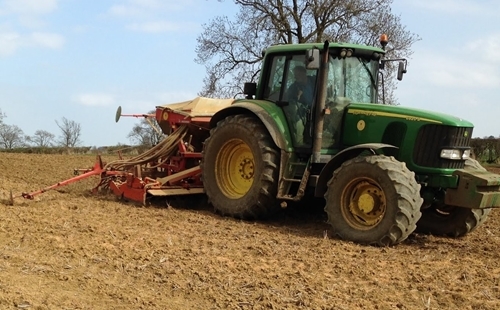Written by Prof. Chris Stoate Allerton Project Head of Research

It is not uncommon to get asked for research results at the start of a research project, rather than the end of it! It is gratifying that the research projects we carry out are perceived to be so relevant that people are keen to know the ‘answers’ so soon, but it does take a while to get the projects set up, and the data collected, analysed and condensed into a form that is accessible for those who are going to use them. And getting the results into that form raises another issue. Not only is there a temporal challenge to making results available; there is also one of precision.
Much of our research is focussed on developing management practices that will have environmental benefits of one sort or another. If they do not, then we say so. It is as important to share negative outcomes as it is positive ones. Where they are successful, we need to get the message out there so that the management practices can be adopted more widely.
For the ‘message’ to be accessible, it must be concise. Soundbites and infographics are indisputably effective means of conveying simple messages with maximum impact. The problem is that the messages are often not simple.
A classic example is provided by research into soil management practices to reduce soil and nutrient loss via surface runoff. Reducing the intensity of cultivation and positioning a beetle bank across the slope were both beneficial management practices. Compared to conventional practice, reduced tillage reduced surface runoff by between 4 and 81%, and a beetle bank across the slope reduced soil loss by 16 to 94%, and total phosphorus loss by 9 to 97%.
While both farmers and policy makers want to know, in simple figures, the extent to which management practices are beneficial, in these cases we have to question the meaning of the mean. It is the range of values that reflects the complexity associated with soil type, compaction, slope, topography, rainfall, antecedent soil moisture etc that influences the outcome.
In most cases, the range in values was lower than the examples I have given, but the point is that understanding and accepting complexity and variability is important to managing the expectations of both farmers who may be considering adopting management practices, and policy makers who may be considering promoting or supporting them. Climate change brings additional uncertainty to the mix.
Accepting this is particularly important when payments by results are being considered as a means of remunerating farmers for management practices that deliver public benefits. But, somehow, this should not detract from the fact that the effort and skills that farmers apply to management practices also play a major part in the extent to which public benefits are delivered. We need to embrace this complexity in order to be meaningful.